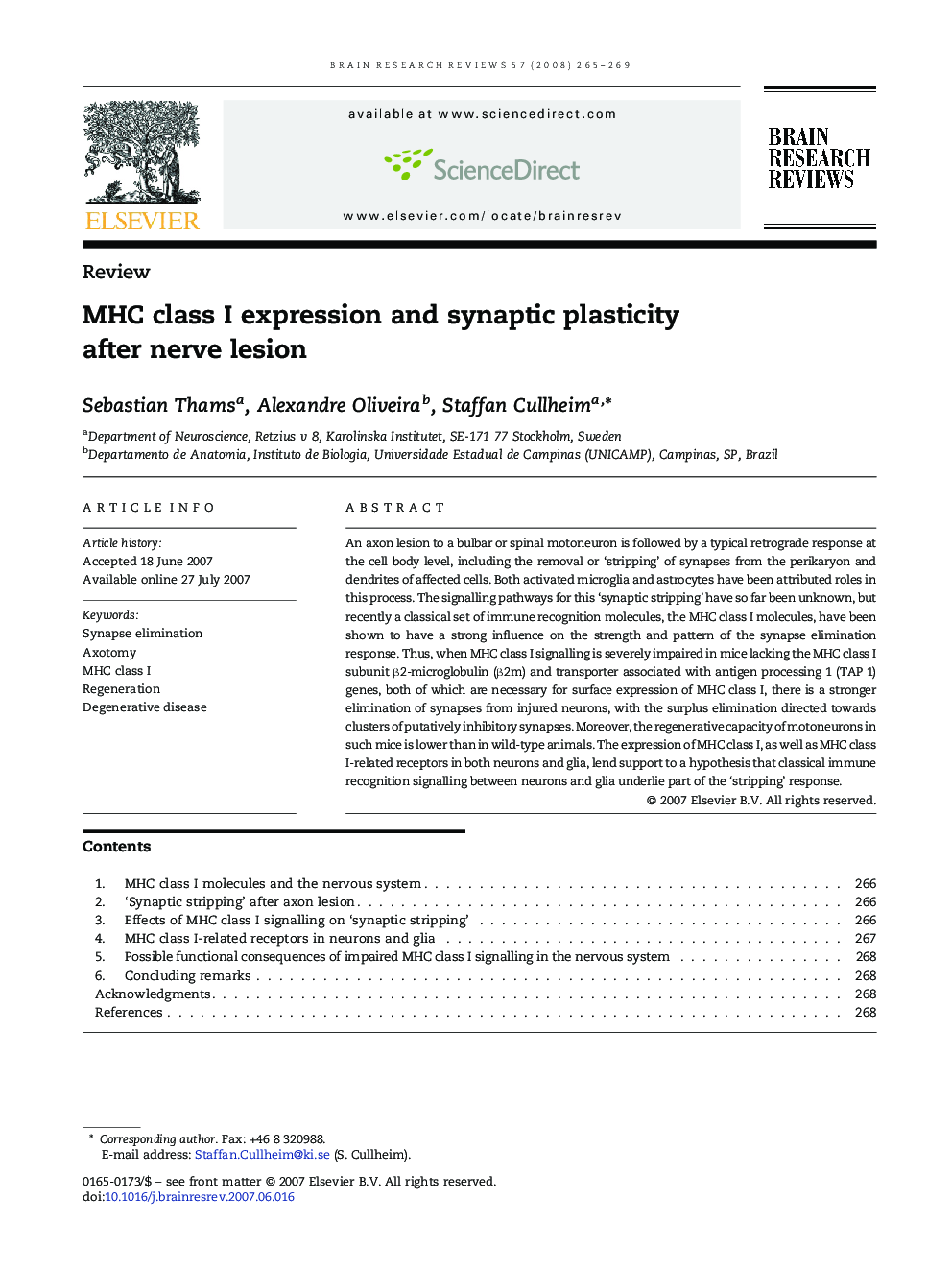| کد مقاله | کد نشریه | سال انتشار | مقاله انگلیسی | نسخه تمام متن |
|---|---|---|---|---|
| 4333938 | 1294759 | 2008 | 5 صفحه PDF | دانلود رایگان |

An axon lesion to a bulbar or spinal motoneuron is followed by a typical retrograde response at the cell body level, including the removal or ‘stripping’ of synapses from the perikaryon and dendrites of affected cells. Both activated microglia and astrocytes have been attributed roles in this process. The signalling pathways for this ‘synaptic stripping’ have so far been unknown, but recently a classical set of immune recognition molecules, the MHC class I molecules, have been shown to have a strong influence on the strength and pattern of the synapse elimination response. Thus, when MHC class I signalling is severely impaired in mice lacking the MHC class I subunit β2-microglobulin (β2m) and transporter associated with antigen processing 1 (TAP 1) genes, both of which are necessary for surface expression of MHC class I, there is a stronger elimination of synapses from injured neurons, with the surplus elimination directed towards clusters of putatively inhibitory synapses. Moreover, the regenerative capacity of motoneurons in such mice is lower than in wild-type animals. The expression of MHC class I, as well as MHC class I-related receptors in both neurons and glia, lend support to a hypothesis that classical immune recognition signalling between neurons and glia underlie part of the ‘stripping’ response.
Journal: Brain Research Reviews - Volume 57, Issue 1, January 2008, Pages 265–269